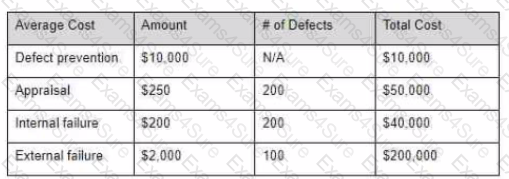Advanced Test Management Exam v 3.0 – ISTQB
Last Update 2 months ago
Total Questions : 50
Advanced Test Management Exam v 3.0 – ISTQB is stable now with all latest exam questions are added 2 months ago. Incorporating ATM practice exam questions into your study plan is more than just a preparation strategy.
ATM exam questions often include scenarios and problem-solving exercises that mirror real-world challenges. Working through ATM dumps allows you to practice pacing yourself, ensuring that you can complete all Advanced Test Management Exam v 3.0 – ISTQB practice test within the allotted time frame.
Which of the following Is a way in which risk analysis drives testanalysis?
Your team has been assigned to a new project You have a mix of manual testers and automation engineers but everyone is currently doing manual testing.The development learn has already decided to use DevOps as its approach but they have never used it before and are happy to take your input Unfortunately, about 50% of the development is completed already In the testing your team is doing they are finding that about 40% of the defects they catch are actually regressions caused by other changes
Given this information what should you do to help mitigate risk'?
You are working for an outsource testing company You have a client that will only consider candidates that are highly skilled with Salesforce. regardless of the number of years they have spent testing similar products You have looked through your skills matrix and you have no one with the right type of experience for this project.
What competence area is your team lacking?
You are a new lest manager in an organization You have been asked to assess the defect process to determine if there are any efficiency improvements that could be made that would reduce the cost of quality You have started digging through the defect Information What information would be most helpful for this investigation?
You have been looking at the actual vs expected defects in one high risk area of the software The actual is much higher than the expected value What should you do?
If you are monitoring code coverage during testing to determine what areas still need testing what type of testing is likely occurring?
You have been assigned to a project that has a very tight schedule.In fact, given your first analysis you do not think the planned test execution can be completed within the schedule There is no time allowed for defectfixing or for repeating tests.Regression testing has been left out of the planning entirely There is no time to develop test automation.The team has agreed that this Is not the way to run a project, yet they are stuck with the current schedule
Given this information what is the best way to proceed with the testing to try to meet the deadline with the best outcome1?
You have been asked to estimate the testing effort for an upgrade to a legacy product Your team did the testing on the last upgrade, and you have ascertained that this upgrade is about 10% bigger than the last one Given this information which estimation technique should you use to come up with the test effort number?
You have assembled the following cost of quality numbers 200 defects were found prior to release and 100 were found after.
Given this information what is the total cost of quality for this project?



TESTED 03 Apr 2025
Hi this is Romona Kearns from Holland and I would like to tell you that I passed my exam with the use of exams4sure dumps. I got same questions in my exam that I prepared from your test engine software. I will recommend your site to all my friends for sure.
Our all material is important and it will be handy for you. If you have short time for exam so, we are sure with the use of it you will pass it easily with good marks. If you will not pass so, you could feel free to claim your refund. We will give 100% money back guarantee if our customers will not satisfy with our products.